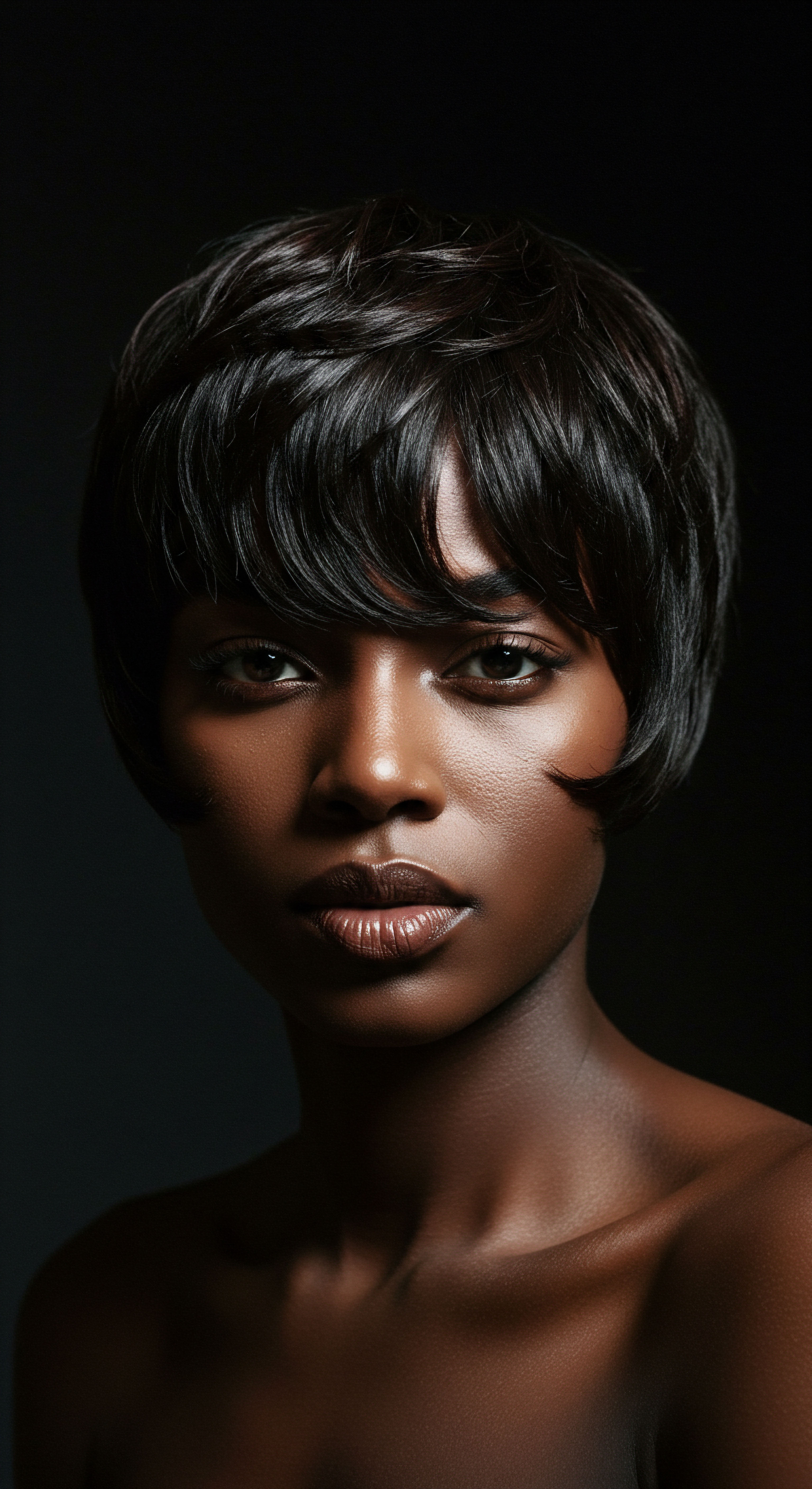
Roots
The whisper of ancient wisdom often finds its truest voice in the simplest gifts of the earth. Before the advent of complex formulations and synthetic wonders, communities around the globe looked to their immediate surroundings for remedies and nourishment. For textured hair, particularly within African lineages, a singular ingredient rises through the mists of time, carrying with it generations of care, resilience, and profound connection ❉ Shea Butter. This golden balm, extracted from the nuts of the shea tree, known scientifically as Vitellaria paradoxa, has long served as a cornerstone of beauty and wellbeing across the West African savannah.
It represents not merely a product, but a legacy, a living testament to an enduring relationship between people and their environment. Its story is one of deep reverence, a gentle reminder that some of the most potent secrets for thriving hair lie in the earth’s quiet offerings.
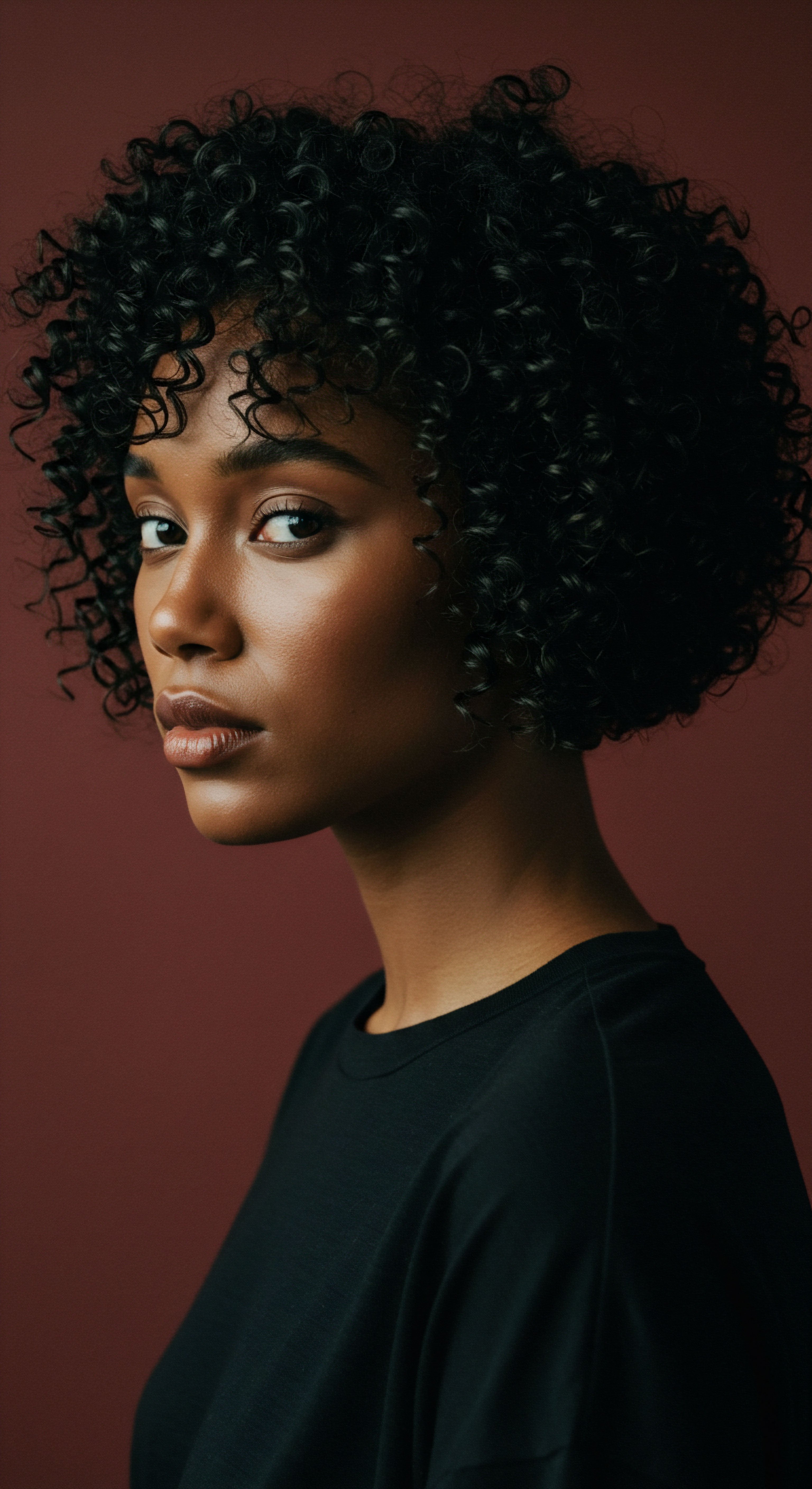
What is Shea Butter
Shea butter originates from the nuts of the shea tree, sometimes called the “karite tree,” a name that speaks to its “tree of life” status due to its many beneficial properties. These trees grow primarily in the dry savannah belt of West Africa, a region often referred to as the “Shea Belt,” spanning countries from Senegal to South Sudan. The extraction of shea butter is a process steeped in tradition, largely carried out by women in rural communities. It begins with the careful harvesting of shea fruits, which resemble small plums.
The outer pulp is removed, revealing the kernel within. These kernels are then dried, crushed, roasted, and ground into a paste. This paste is then meticulously kneaded, often by hand, and boiled to separate the pure butter, which then cools and solidifies into the creamy substance we recognize. This artisanal method ensures that the butter retains its wealth of natural nutrients.
Shea butter, derived from the Vitellaria paradoxa tree in West Africa, has been a foundational hair care ingredient for millennia, deeply rooted in cultural practices and communal wellbeing.
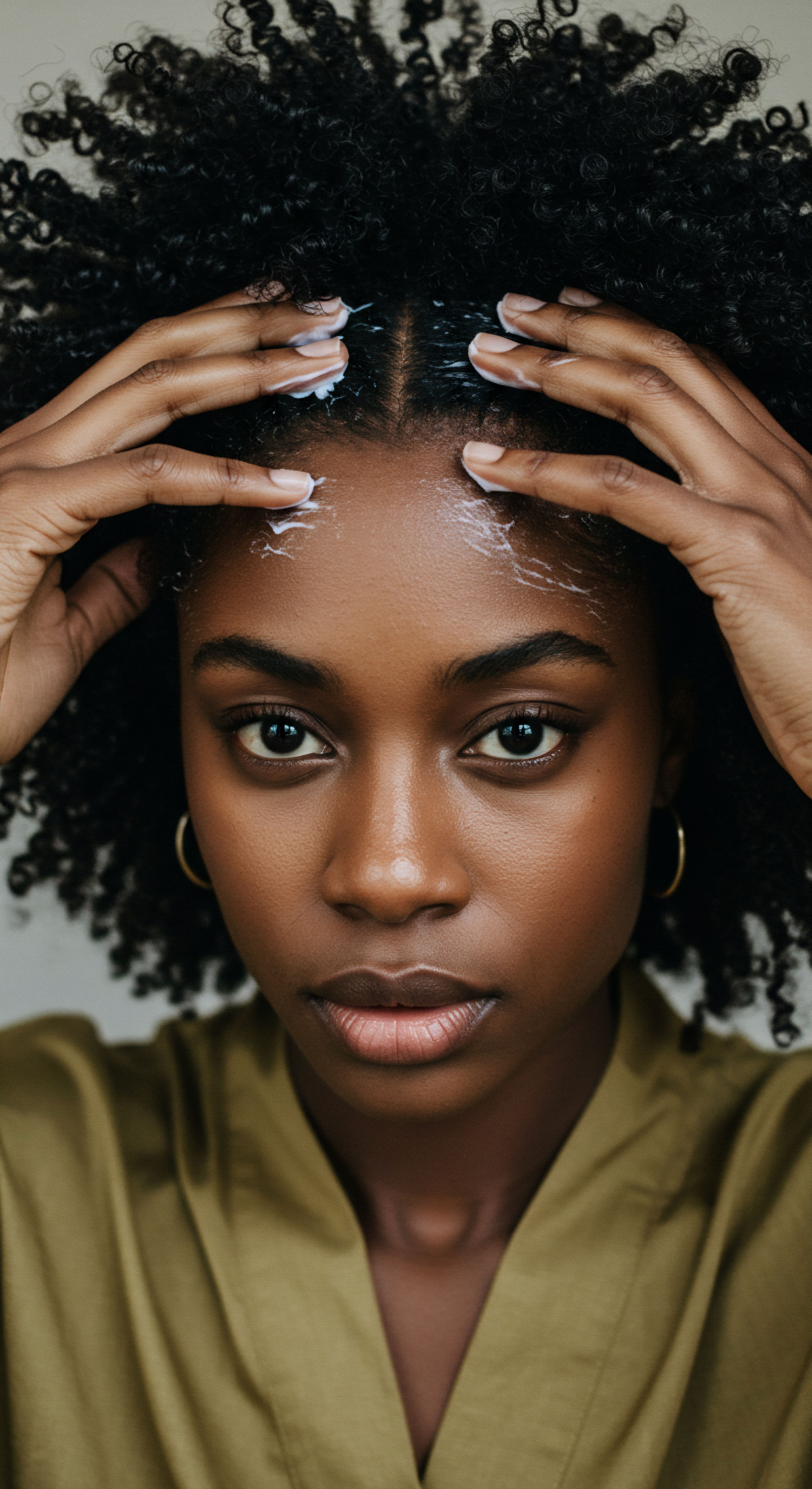
A Historical Balm for Hair
For thousands of years, shea butter has been an integral part of African cultures, used not only for hair and skin but also in cooking, medicine, and even as lamp oil. Its application for hair care is documented as far back as the 14th century, though its use undoubtedly predates this record. Women in African communities traditionally applied shea butter to protect their skin and hair from the harsh sun, wind, and dust of the environment.
It served as a natural moisturizer, a healing balm, and a protective layer against the elements, particularly valuable for textured hair types that tend towards dryness. The knowledge of its benefits and the techniques for its preparation were passed down through generations, mother to daughter, making it a powerful symbol of heritage and continuous care.

The Hair’s Connection to Shea
The remarkable properties of shea butter for hair stem from its unique composition. It is rich in Fatty Acids, such as oleic, stearic, palmitic, and linoleic acids, which are crucial for hair health. These components act as emollients, helping to lock moisture into the hair shaft and prevent dryness, a common challenge for textured hair which has a more open cuticle layer. Beyond fatty acids, shea butter contains Vitamins A and E, offering antioxidant properties that contribute to overall hair and scalp wellbeing.
These elements work in concert, providing a gentle yet effective shield, conditioning strands, and promoting a serene scalp environment. The traditional wisdom of using shea butter for hair finds strong support in its rich natural chemistry.
| Category of Use Skin Care |
| Specific Applications Moisturizer, Sun Protection, Healing Burns, Soothing Eczema |
| Category of Use Medicinal |
| Specific Applications Anti-inflammatory, Muscle Pain Relief, Cold Treatment |
| Category of Use Culinary |
| Specific Applications Cooking Oil, Cocoa Butter Substitute |
| Category of Use Household |
| Specific Applications Lamp Oil, House Waterproofing, Insect Repellent |
| Category of Use Shea butter's versatility extended far beyond hair care in its traditional contexts. |
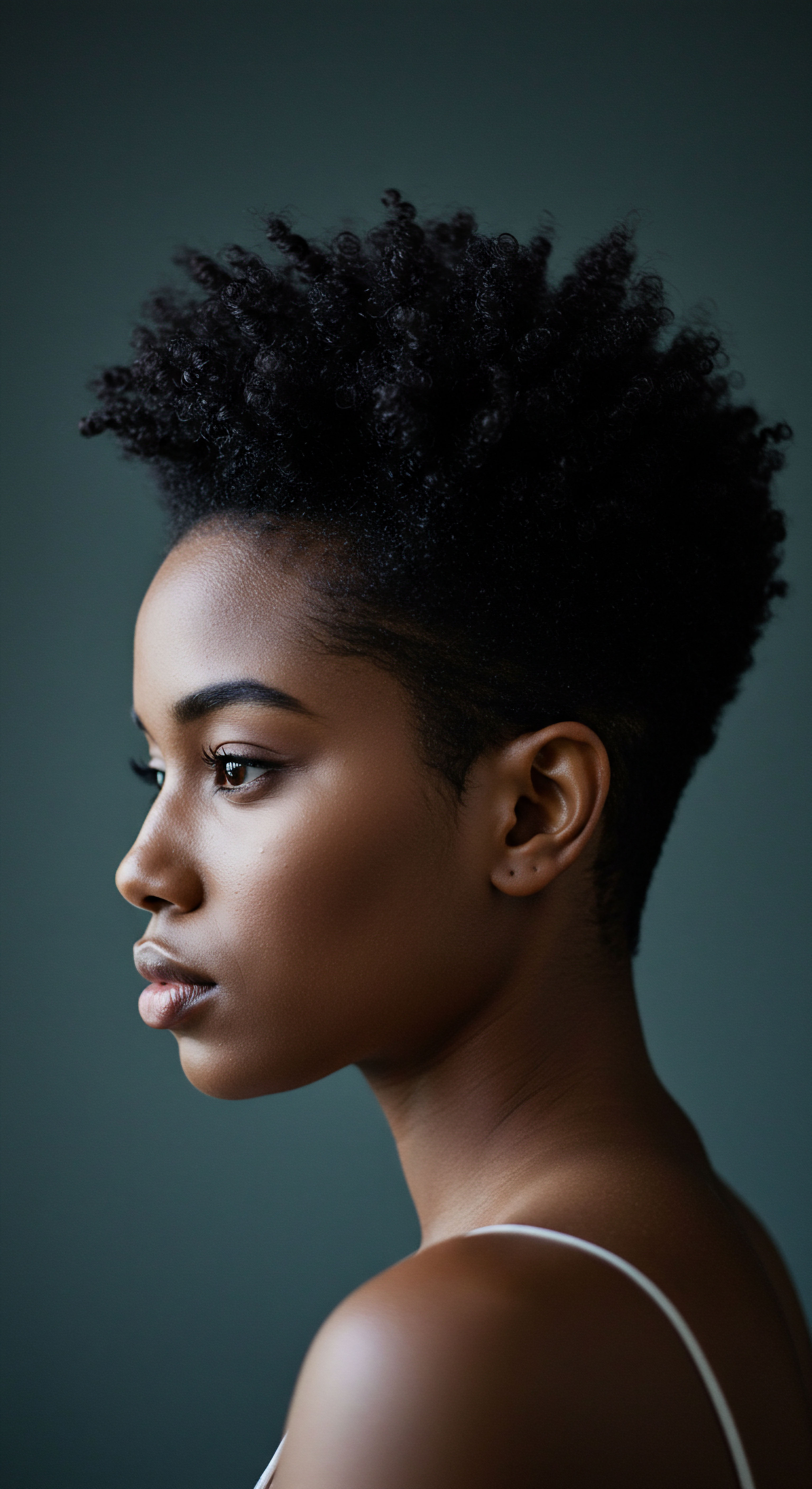
Ritual
Moving from the quiet wisdom of origins, we step into the rhythmic dance of daily practices, where the earth’s gifts transform into tangible acts of care. The application of shea butter to textured hair has never been a mere task; it is a ritual, a moment of connection, a silent conversation between hands and strands. This section explores how this ancient ingredient found its way into the consistent care practices of communities, offering not only physical benefits but also a sense of purposeful self-attunement. We look at the methods passed down through generations, and how these traditional gestures continue to shape modern textured hair routines, providing a grounding influence in a world of fleeting trends.

Traditional Application Methods
Historically, the use of shea butter for textured hair was deeply integrated into daily life and specific ceremonies. It was applied in various ways, often tailored to the hair’s needs and the desired outcome.
- Scalp Massage ❉ A generous amount of Shea Butter was warmed gently between the palms and massaged into the scalp. This practice aimed to soothe dryness, alleviate irritation, and stimulate circulation, fostering a healthy environment for hair growth. The anti-inflammatory properties of shea butter were particularly valued for scalp conditions.
- Hair Sealant and Protector ❉ Shea butter was applied to the hair strands themselves, particularly the ends, to seal in moisture and provide a protective barrier against environmental stressors. This was especially crucial in dry climates, preventing excessive moisture loss and minimizing breakage.
- Pre-Shampoo Treatment ❉ Before cleansing, shea butter might be applied as an oil bath, left on for a period to soften and prepare the hair, offering a layer of protection against the stripping effects of traditional cleansing agents. This helped maintain the hair’s natural oils.
These methods reflect an intuitive understanding of textured hair’s need for sustained moisture and protection, long before scientific terms like “occlusive” or “emollient” were commonplace.
The historical use of shea butter for textured hair was a multifaceted ritual, serving as a scalp treatment, a protective sealant, and a pre-wash conditioner.

Modern Interpretations of Shea Butter Use
Today, these traditional applications find their echoes in contemporary textured hair care regimens. The wisdom of the past informs the practices of the present, albeit often with a modern twist.
- Leave-In Conditioner and Styler ❉ Many now use whipped or softened Shea Butter as a leave-in conditioner, particularly for wash-and-go styles, braids, or twists. Its rich texture helps to define curls and coils, reduce frizz, and impart a healthy sheen.
- Deep Conditioning Masks ❉ Shea butter is a popular ingredient in homemade or commercial deep conditioning treatments. Applied to damp hair, often under a heat cap or plastic film, it allows the butter’s beneficial components to penetrate and condition the hair deeply.
- Scalp Care Balm ❉ For those experiencing dry or itchy scalps, a small amount of shea butter can be gently massaged in, continuing the ancient practice of soothing and nourishing the scalp directly.
The transition from raw shea butter to formulated products containing it has broadened its accessibility, yet the core principles of its application remain rooted in its historical uses.

Considerations for Modern Use
While the benefits of shea butter are undeniable, understanding its characteristics is key to optimal modern use.
| Type of Shea Butter Unrefined (Raw) |
| Description Minimally processed, retains natural color (yellowish/ivory) and nutty scent, higher nutrient content |
| Common Hair Use Deep conditioning, sealing, scalp treatment for maximum benefit |
| Type of Shea Butter Refined |
| Description Processed to remove scent and color, often white, may have reduced nutrient levels |
| Common Hair Use Lighter applications, product formulations where scent/color is undesirable |
| Type of Shea Butter Choosing the right type of shea butter can influence its efficacy and sensory experience in hair care. |
For those with finer textured hair, a lighter hand with shea butter is often advisable to avoid weighing down strands. Its richness makes it particularly suited for dry, damaged, or denser hair types. The quality and sourcing of shea butter also play a role, with unrefined, ethically sourced varieties often preferred for their purity and higher concentration of beneficial compounds.
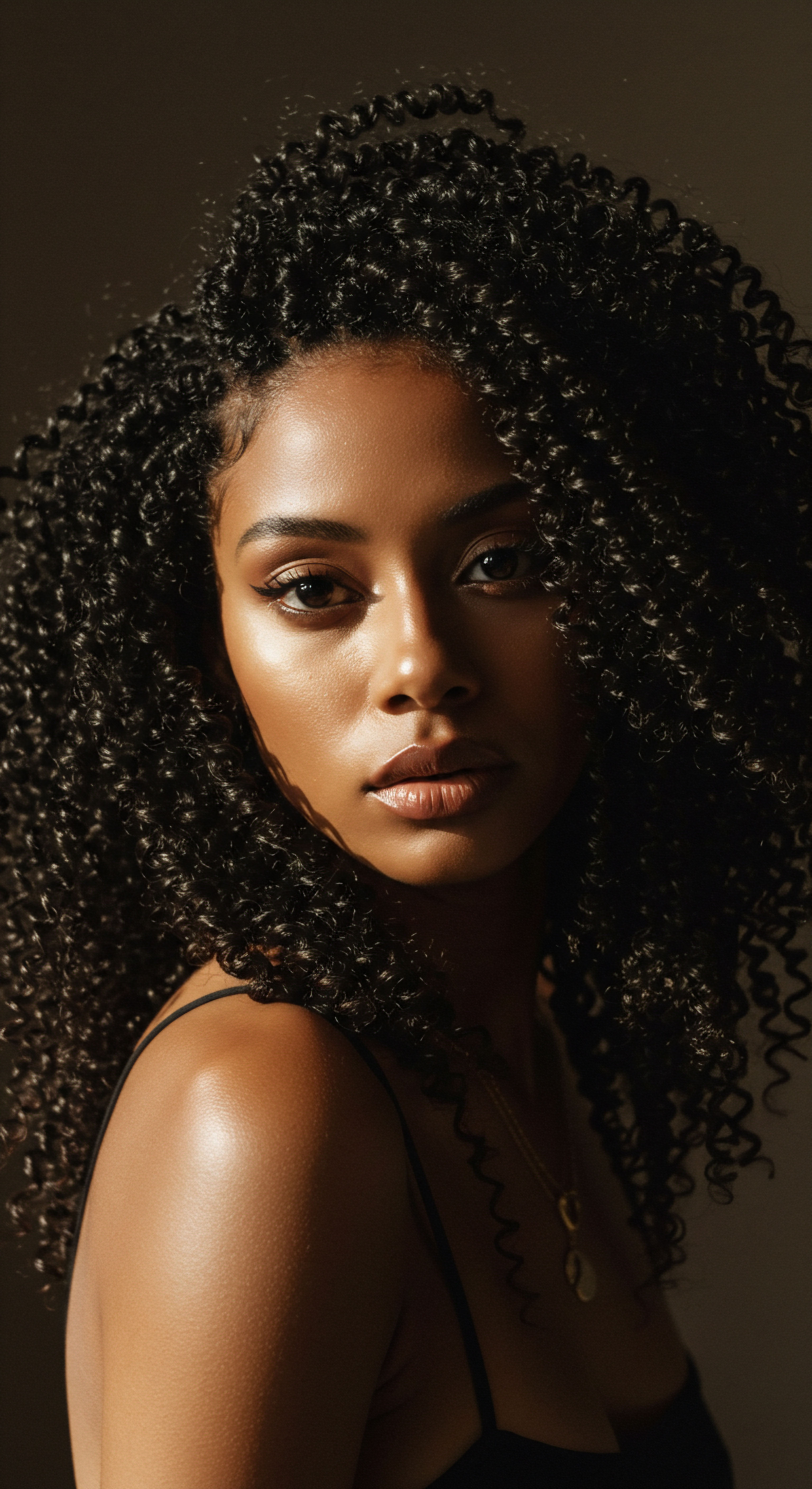
Relay
Having journeyed through the foundational understanding and practical applications of shea butter, we now arrive at a deeper inquiry, a convergence of science, culture, and the profound societal resonance of this ancient ingredient. How does something so seemingly simple carry such complex layers of meaning and benefit? This section peels back those layers, moving beyond surface-level observations to explore the scientific underpinnings of shea butter’s efficacy and its enduring impact on human lives, particularly the women who bring it forth. We will connect its molecular architecture to its hair-nurturing capabilities and cast a light on its broader socio-economic significance, revealing how this historical hair care ingredient is, in fact, a living testament to sustainable wellbeing.

The Science of Shea’s Efficacy for Hair
The tangible benefits of shea butter for textured hair are not merely anecdotal; they are rooted in its unique biochemical composition. At its core, shea butter is a complex lipid, primarily composed of Triglycerides, which are fats made up of glycerol and fatty acids. The predominant fatty acids found in shea butter include oleic acid and stearic acid, alongside smaller amounts of palmitic and linoleic acids.
These fatty acids contribute significantly to shea butter’s emollient and moisturizing properties. Oleic acid, a monounsaturated fatty acid, helps to soften and condition the hair, making it more supple. Stearic acid, a saturated fatty acid, contributes to the butter’s solid consistency at room temperature and its ability to coat the hair shaft, providing a protective barrier.
This coating action is particularly beneficial for textured hair, which often possesses a more open cuticle layer, making it prone to moisture loss. By forming a film on the hair’s surface, shea butter helps to seal in hydration, reducing dryness and susceptibility to breakage.
Beyond its fatty acid profile, shea butter contains a notable unsaponifiable fraction, which refers to components that do not convert into soap when mixed with alkali. This fraction includes Triterpene Alcohols (like α-amyrin, β-amyrin, lupeol, and butyrospermol) and their esters (such as cinnamic acid esters). These compounds are credited with many of shea butter’s therapeutic properties, including anti-inflammatory and antioxidant effects. For the scalp, these anti-inflammatory properties can soothe irritation and create a healthier environment for hair follicles, indirectly supporting hair health.
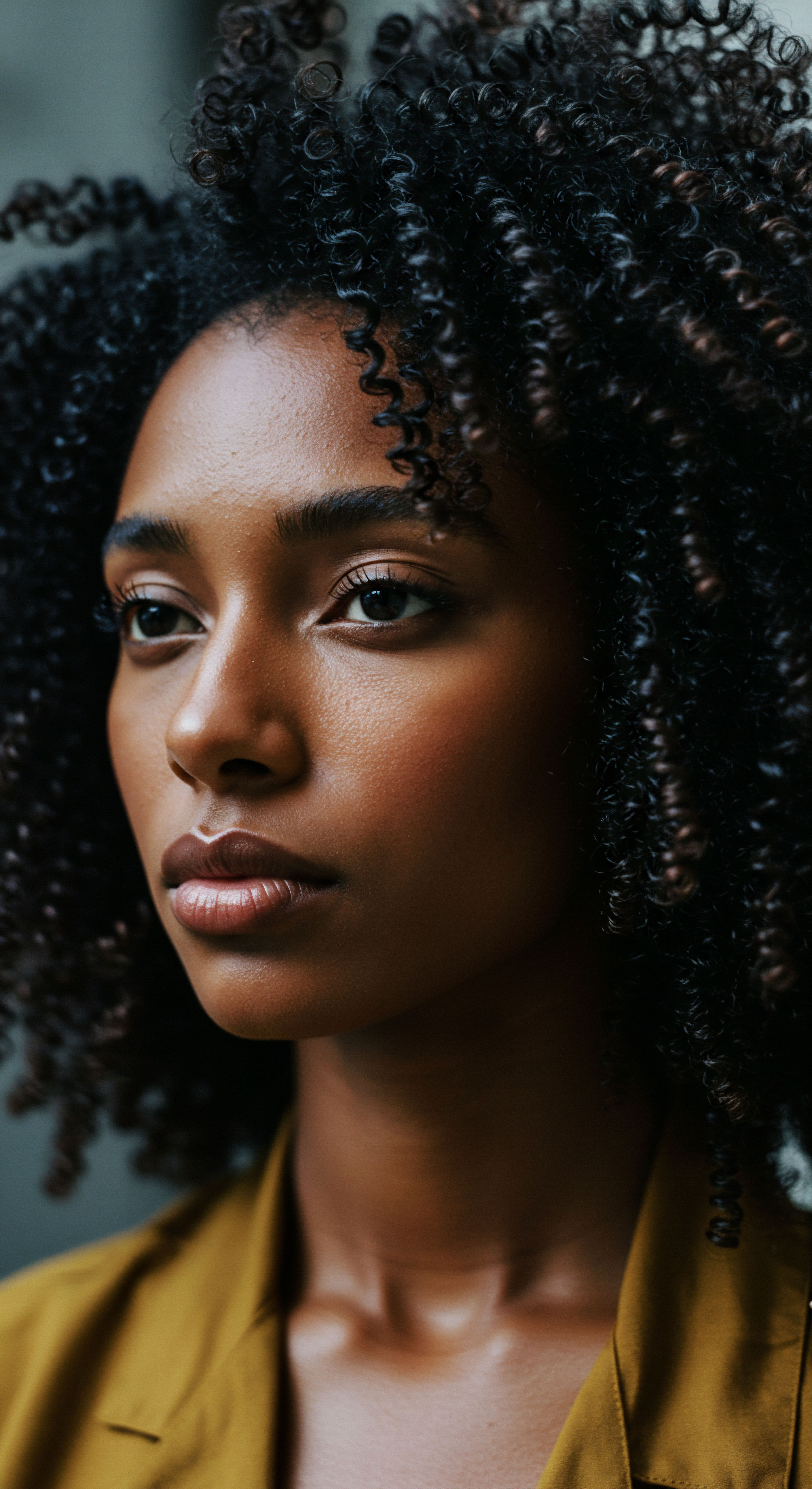
How Does Shea Butter Penetrate Hair?
The interaction of oils with hair fibers is a subject of ongoing scientific inquiry. While some oils, like coconut oil, are known for their ability to penetrate the hair shaft due to their small molecular size and linear structure, shea butter, with its higher concentration of longer-chain fatty acids and unsaponifiable matter, primarily acts as a surface conditioner and sealant.
Research indicates that the beneficial effects of many oils on hair, including shea butter, are significantly attributed to the layer of oil they form on the fiber’s surface. This surface film helps to:
- Reduce Moisture Regain ❉ By acting as a barrier, the oil layer slows down the absorption and desorption of water, which can mitigate hygral fatigue—the repeated swelling and drying that weakens hair over time.
- Enhance Lubrication ❉ A consistent application of oil enhances the lubrication of the hair shaft, reducing friction between strands and preventing breakage during styling and manipulation.
- Protect the Cuticle ❉ The oil can fill gaps between cuticle cells, offering a protective shield against external aggressors like surfactants or heat damage.
While a deeper penetration into the cortex may be limited for shea butter compared to lighter oils, its substantial occlusive and film-forming capabilities are precisely what make it so effective for textured hair, which benefits immensely from external protection and moisture retention.

Beyond the Strand How Shea Butter Empowers Women?
The story of shea butter extends far beyond its direct benefits to hair; it is a powerful narrative of economic empowerment and cultural preservation, particularly for women in West Africa. The collection and processing of shea nuts are traditionally women’s work, providing a vital source of income for millions of rural households. This economic activity, often referred to as “women’s gold,” allows them to support their families, invest in education, and gain greater autonomy within their communities.
Consider this compelling data point ❉ The shea industry provides employment for an estimated 16 Million Rural Women across 21 African Countries, from Senegal to South Sudan. These women play a central role in every stage of the shea value chain, from harvesting the nuts to processing and selling the butter in local and international markets. This participation offers opportunities for income generation, skills development, and increased decision-making power within their families and communities.
For instance, initiatives by organizations like the Global Shea Alliance and their partners focus on building the capacity of women’s groups through training and services, connecting them to wholesale buyers, and providing access to finance. This collective effort not only sustains a traditional practice but also elevates the social and economic standing of women, making shea butter a symbol of self-sufficiency and community resilience.
The shea industry empowers 16 million rural women across 21 African countries, highlighting the ingredient’s profound socio-economic impact.
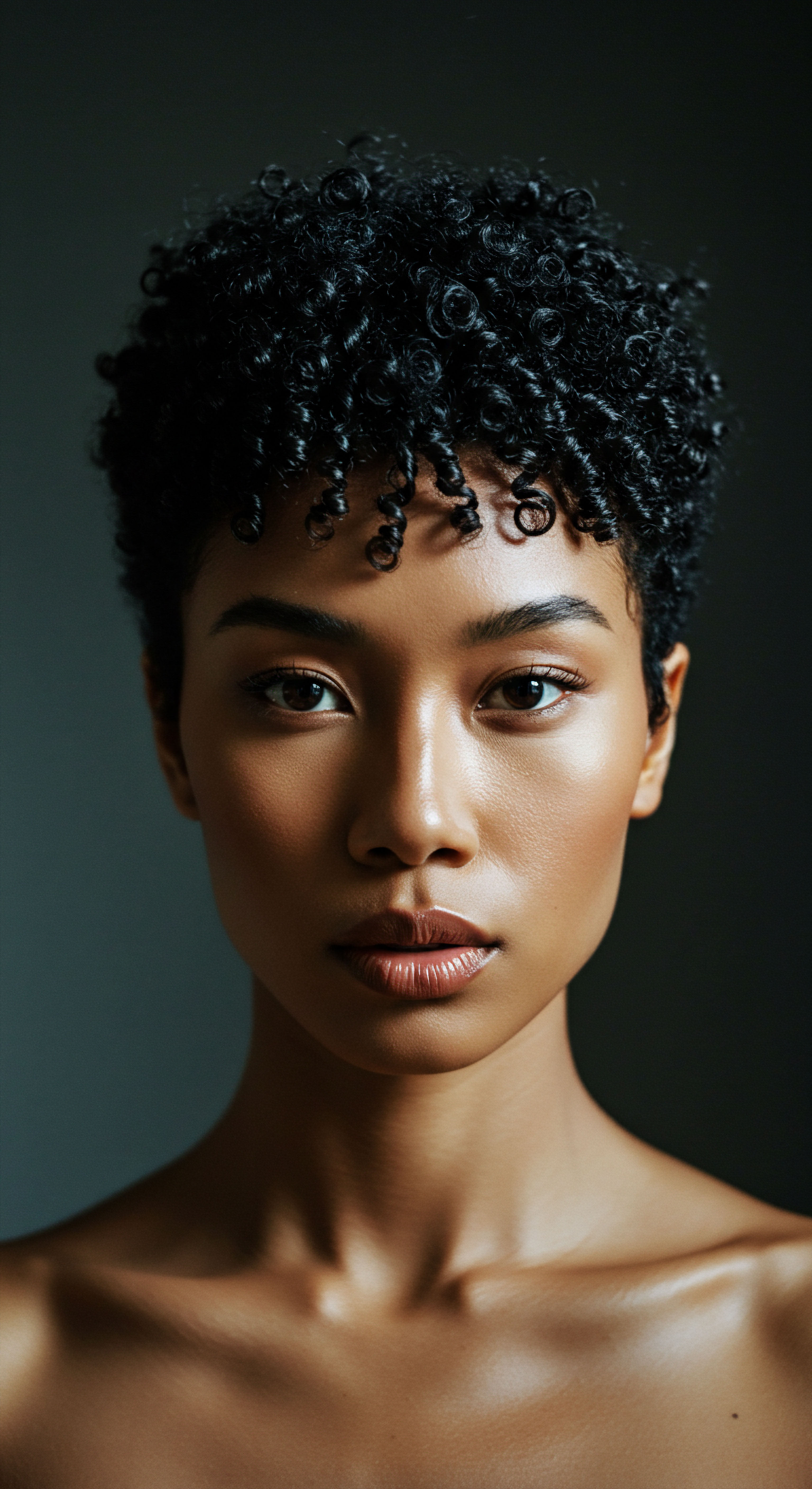
Navigating Modern Challenges and the Future
Despite its ancient roots and contemporary relevance, the shea industry faces modern challenges. Issues like sustainable harvesting, fair trade practices, and the balance between traditional methods and industrial demand require careful consideration. The increasing global demand for shea butter in cosmetics and food industries puts pressure on traditional ecosystems and practices. Efforts are ongoing to ensure that the growth of the shea market benefits the communities that have historically nurtured this resource, rather than exploiting them.
This involves supporting women’s cooperatives, promoting sustainable parkland management, and investing in fair compensation for their labor. The future of shea butter as a historical hair care ingredient depends on a conscious commitment to preserving its cultural heritage and ecological integrity, ensuring that its golden benefits continue to flow responsibly from the earth to our strands.
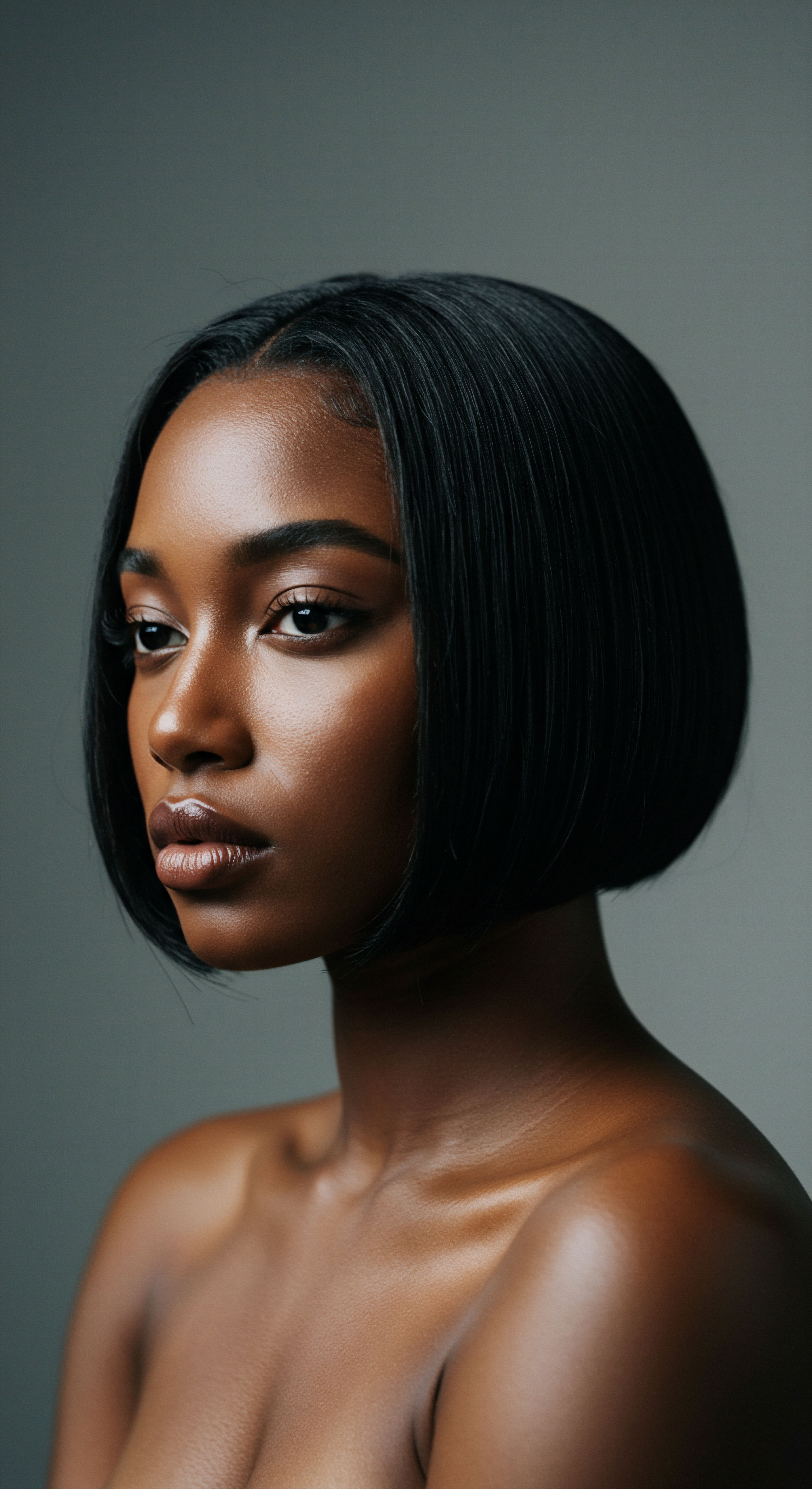
Reflection
As we conclude our exploration of shea butter, we are left with a quiet sense of reverence for an ingredient that transcends its simple physical form. It is more than just a historical hair care staple; it is a living narrative, a bridge connecting ancient wisdom to modern needs, and a powerful testament to the enduring gifts of the natural world. This journey reminds us that true beauty care is often deeply intertwined with cultural heritage, scientific understanding, and a respectful engagement with the earth’s bounty.
The quiet strength of shea butter, cultivated through generations of gentle hands, speaks to the resilience of both hair and humanity. It encourages us to pause, to consider the stories held within each application, and to appreciate the profound, interconnected web of life that nourishes us all.
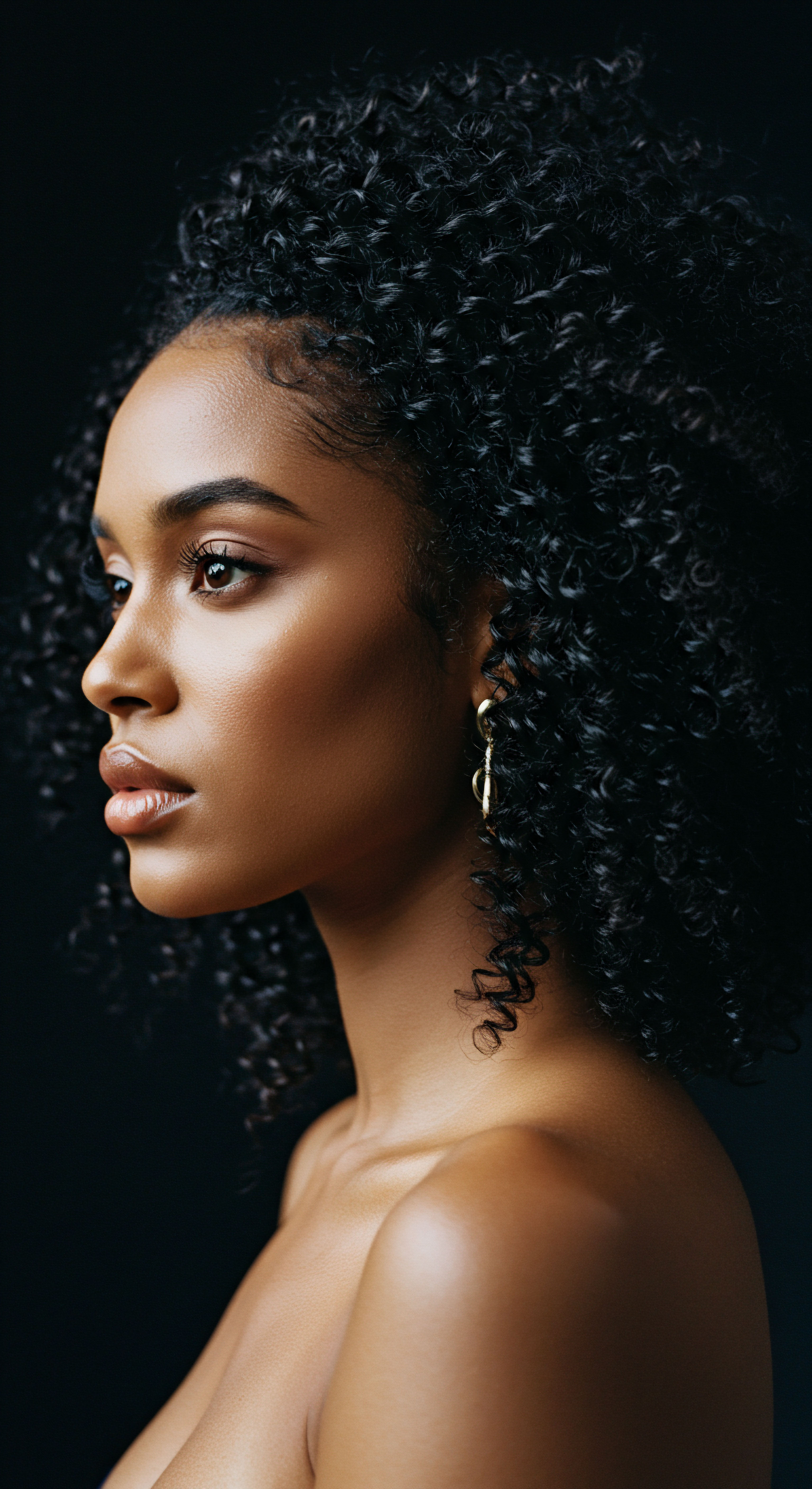
References
- Akihisa, T. Kojima, N. Kikuchi, T. Yasukawa, K. Tokuda, H. Masters, E.T. Manosroi, A. & Manosroi, J. (2010). Anti-Inflammatory and Chemopreventive Effects of Triterpene Cinnamates and Acetates from Shea Fat. Journal of Oleo Science, 59(6), 273-280.
- CABI Compendium. (n.d.). Vitellaria paradoxa (shea tree). Retrieved from CABI Digital Library.
- Nguekeng, K. Nono, N. Tchamgoue, A. & Tchamgoue, S. (2021). Contribution of Shea-Based Livelihoods to Income of Rural Women in North-Western Ghana. Ghana Journal of Development Studies, 20(1), 198-219.
- Rele, A. S. & Mohile, R. B. (2003). Effect of mineral oil, sunflower oil, and coconut oil on prevention of hair damage. Journal of Cosmetic Science, 54(2), 175-192.
- Ruetsch, S. B. Karnath, Y. K. Rele, A. S. & Mohile, R. B. (2001). Secondary ion mass spectrometric investigation of penetration of coconut and mineral oils into human hair fibers ❉ Relevance to hair damage. Journal of Cosmetic Science, 52(3), 169-184.
- Zhang, J. Akihisa, T. & Masters, E. T. (2015). Anti-inflammatory and Other Bioactivities of Triterpene Esters in Shea Butter. In A. M. El-Shemy (Ed.), Triterpenes. IntechOpen.